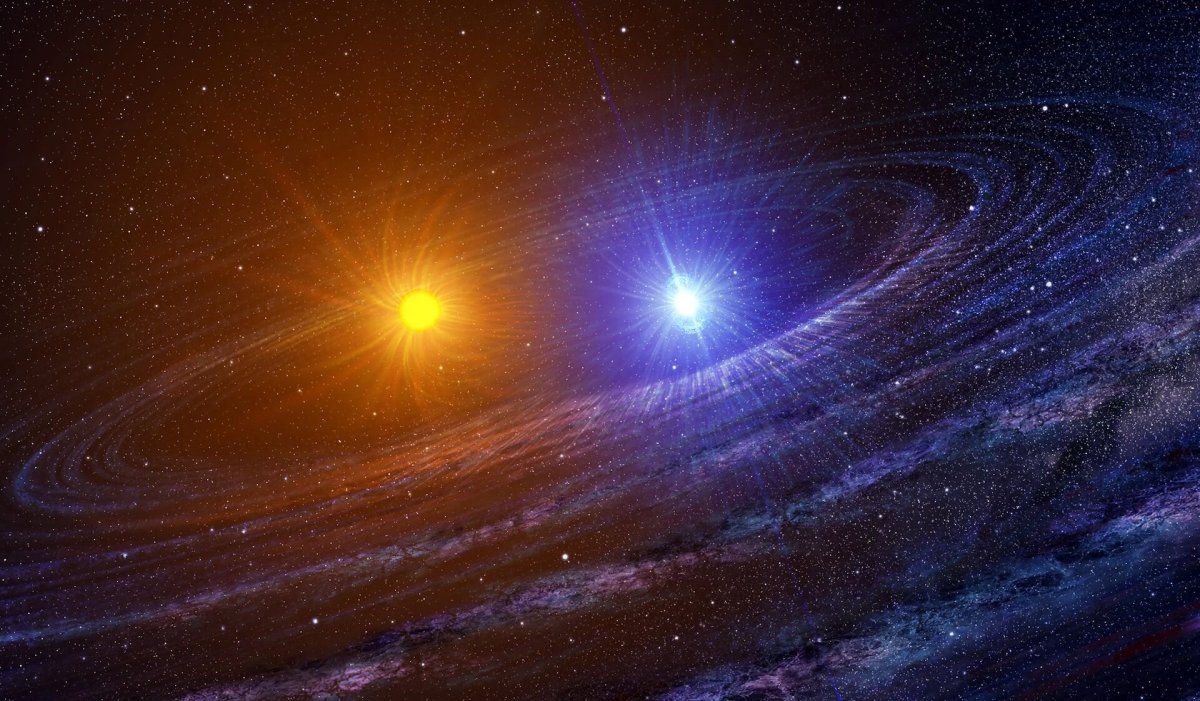Some of the brightest and hottest stars in existence may be formed by the collision of two other stars, astronomers have found.
The formation of these intensely bright stars, called blue supergiants, has mystified scientists for years.
Now, scientists have discovered that most blue supergiants form due to the merging of two smaller stars that once orbited each other in a binary system, according to new research in The Astrophysical Journal Letters.

Blue supergiants are huge, luminous stars that are some of the most massive in the universe, typically ranging from about 16 to 40 times the mass of the sun. They have hot surface temperatures, often being more than 10,000 times more luminous and two to five times hotter than the sun. Examples of stars like these include Rigel in the Orion constellation.
It was initially theorized that blue supergiants formed from stars at the very end of their lives rapidly evolving, which should result in very few of them being found around the cosmos. However, these stars are commonly seen throughout space, puzzling astronomers. Additionally, they are very rarely seen with a companion star, unlikely most other young, massive stars, which are usually seen in binary systems.
These conundrums may have been solved by the new research, which analyzed 59 early B-type blue supergiants in the Large Magellanic Cloud, a small satellite galaxy of the Milky Way.
"We simulated the mergers of evolved giant stars with their smaller stellar companions over a wide range of parameters, taking into account the interaction and mixing of the two stars during the merger. The newly-born stars live as blue supergiants throughout the second longest phase of a star's life, when it burns helium in its core," study author Athira Menon, an astrophysicist at the Instituto de Astrofísica de Canarias (IAC) in Spain, said in a statement.
They found that many of these huge stars may have formed as a result of two binary stars slamming into each other and combining to form one massive sun.
"The results obtained explain why blue supergiants are found in the so-called 'evolutionary gap' from classical stellar physics, a phase of their evolution where we would not expect to find stars," study co-author Artemio Herrero, an IAC researcher, said in the statement.
This theory fits with the observed properties of blue supergiants across the universe.
"Remarkably, we found that stars born from such mergers have greater success in reproducing the surface composition, particularly the nitrogen and helium enhancement, of a large fraction of the sample than conventional stellar models. This indicates that mergers may be the dominant channel to produce blue supergiants," study co-author Danny Lennon, an IAC researcher, said in the statement.
The researchers hope to further investigate the role that merging stars play in the development of galaxies and their stars across the cosmos. Next, they plan to explore how these blue supergiants die, and how they form neutron stars or black holes.
Do you have a tip on a science story that Newsweek should be covering? Do you have a question about stars? Let us know via science@newsweek.com.
Uncommon Knowledge
Newsweek is committed to challenging conventional wisdom and finding connections in the search for common ground.
Newsweek is committed to challenging conventional wisdom and finding connections in the search for common ground.
About the writer
Jess Thomson is a Newsweek Science Reporter based in London UK. Her focus is reporting on science, technology and healthcare. ... Read more
To read how Newsweek uses AI as a newsroom tool, Click here.








